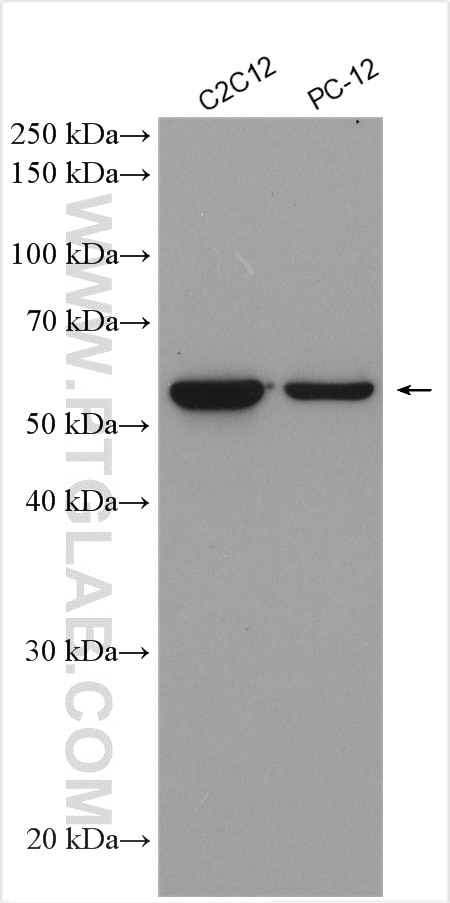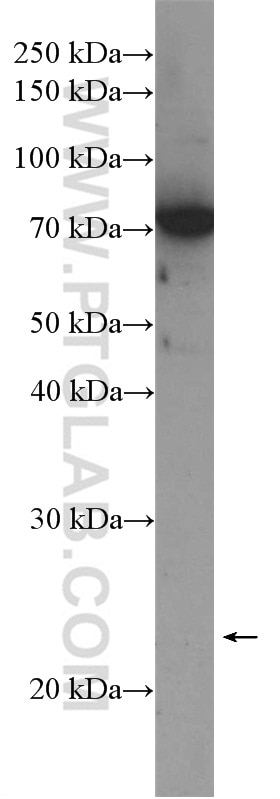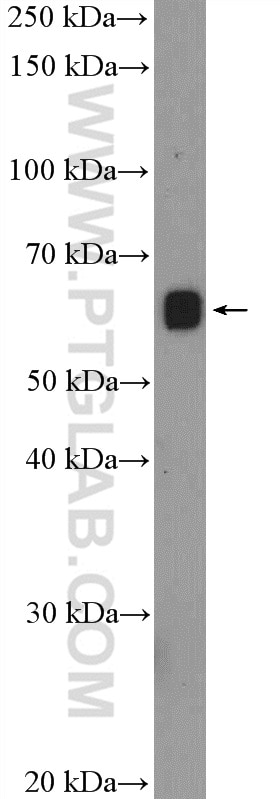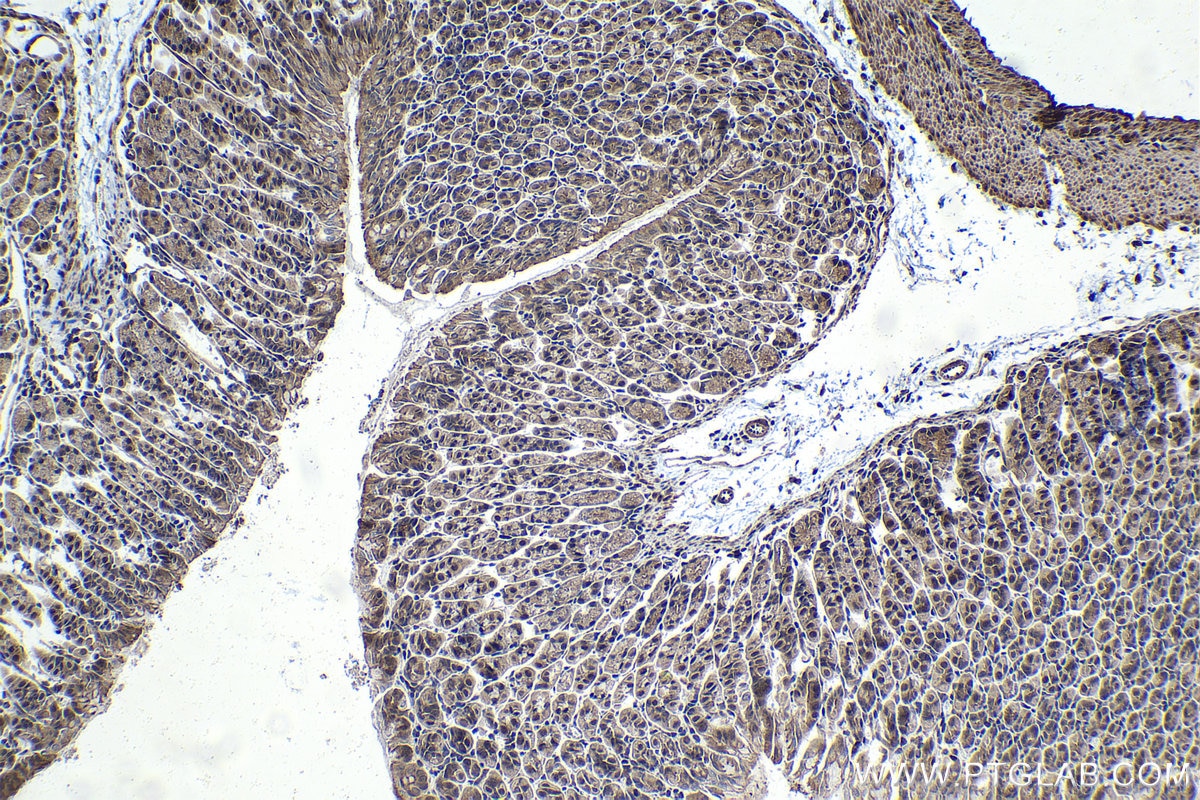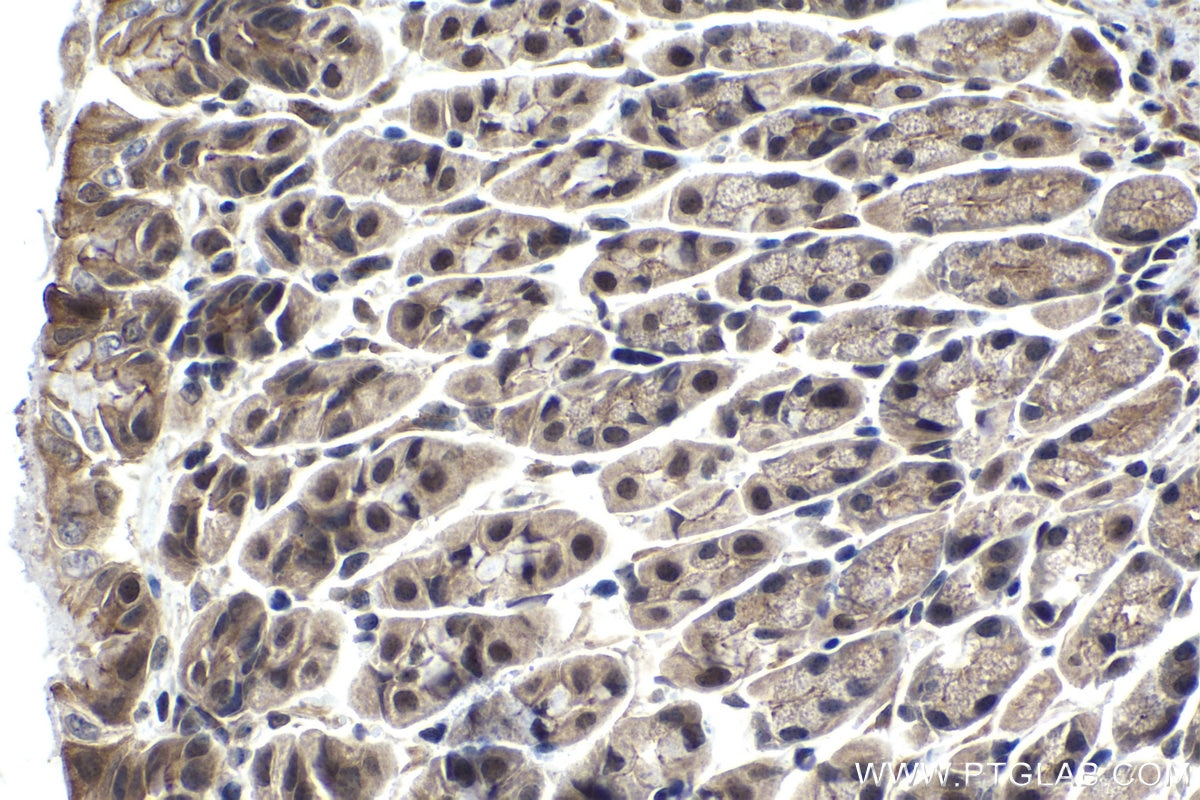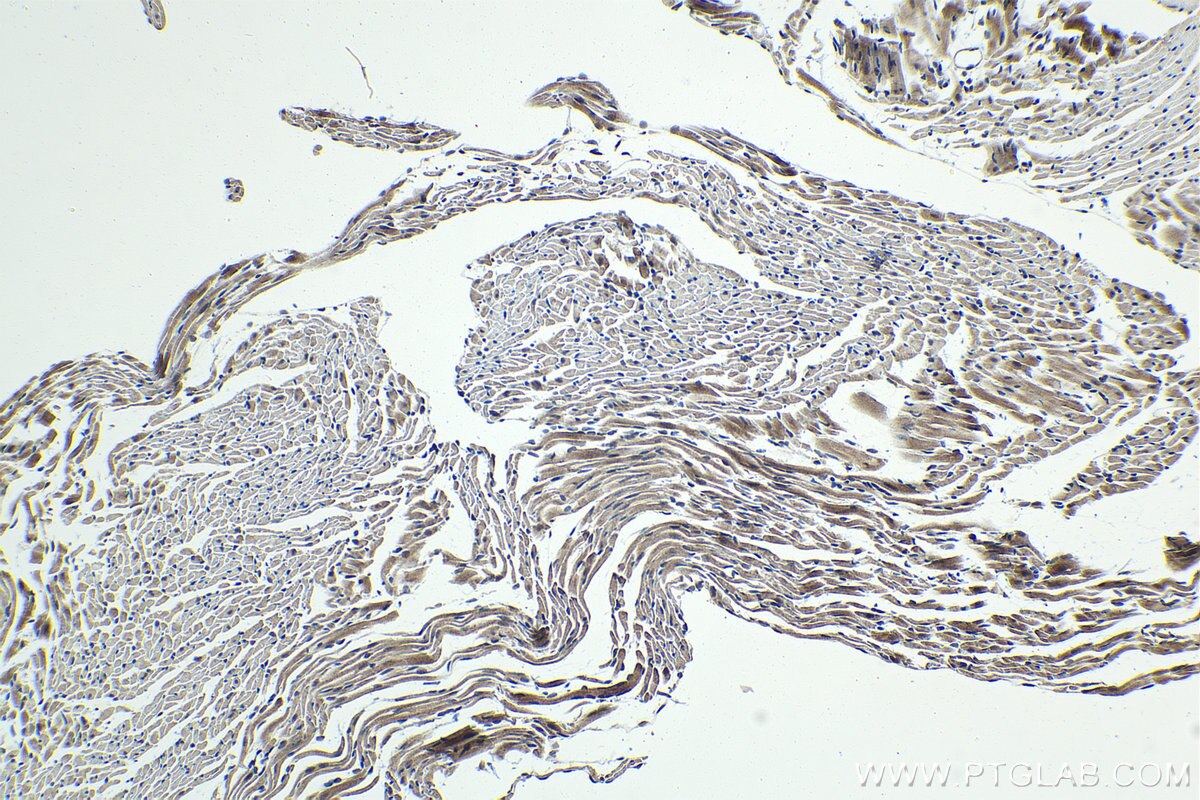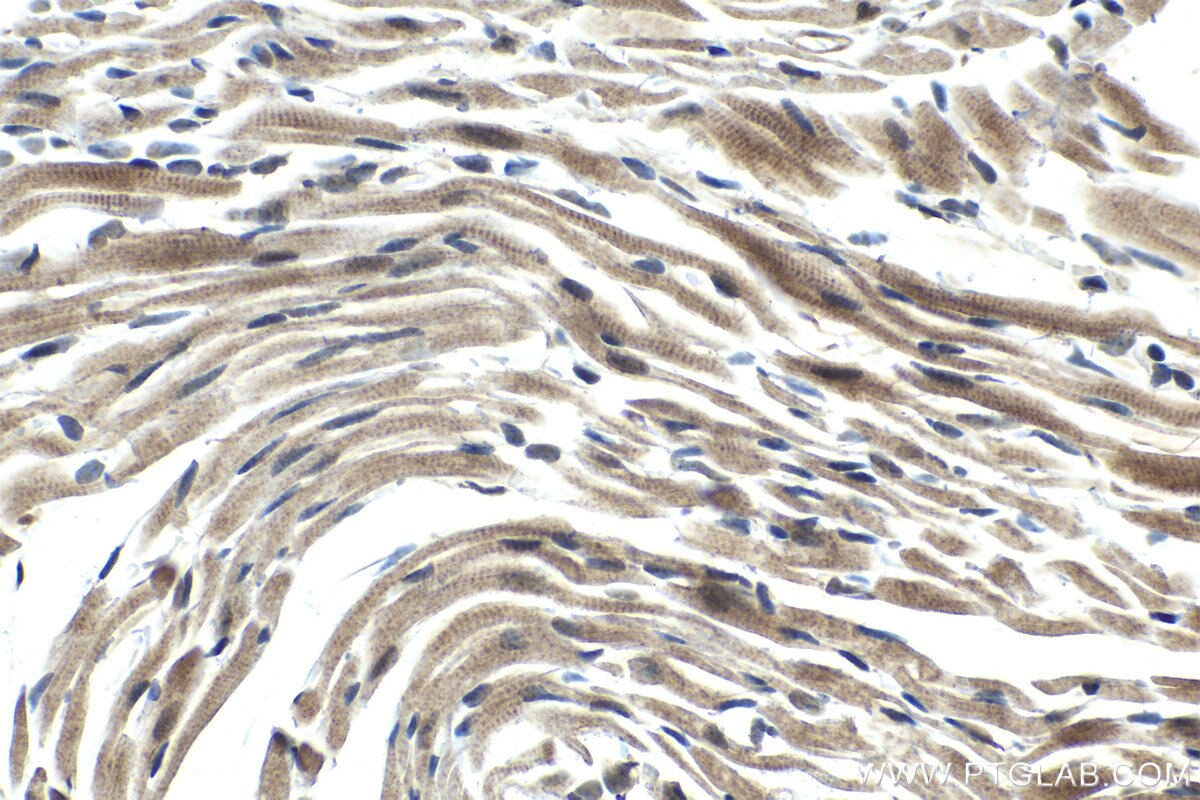PHF1 Polyklonaler Antikörper
PHF1 Polyklonal Antikörper für WB, IHC, ELISA
Wirt / Isotyp
Kaninchen / IgG
Getestete Reaktivität
human, Maus, Ratte
Anwendung
WB, IHC, ELISA
Konjugation
Unkonjugiert
Kat-Nr. : 15663-1-AP
Synonyme
Geprüfte Anwendungen
| Erfolgreiche Detektion in WB | C2C12-Zellen, Mausherzgewebe, Mauslebergewebe, PC-12-Zellen |
| Erfolgreiche Detektion in IHC | Maus-Magengewebe, Mausherzgewebe Hinweis: Antigendemaskierung mit TE-Puffer pH 9,0 empfohlen. (*) Wahlweise kann die Antigendemaskierung auch mit Citratpuffer pH 6,0 erfolgen. |
Empfohlene Verdünnung
| Anwendung | Verdünnung |
|---|---|
| Western Blot (WB) | WB : 1:1000-1:6000 |
| Immunhistochemie (IHC) | IHC : 1:250-1:1000 |
| It is recommended that this reagent should be titrated in each testing system to obtain optimal results. | |
| Sample-dependent, check data in validation data gallery | |
Veröffentlichte Anwendungen
| WB | See 4 publications below |
Produktinformation
15663-1-AP bindet in WB, IHC, ELISA PHF1 und zeigt Reaktivität mit human, Maus, Ratten
| Getestete Reaktivität | human, Maus, Ratte |
| In Publikationen genannte Reaktivität | human, Maus |
| Wirt / Isotyp | Kaninchen / IgG |
| Klonalität | Polyklonal |
| Typ | Antikörper |
| Immunogen | PHF1 fusion protein Ag8094 |
| Vollständiger Name | PHD finger protein 1 |
| Berechnetes Molekulargewicht | 567 aa, 62 kDa |
| Beobachtetes Molekulargewicht | 62-70 kDa |
| GenBank-Zugangsnummer | BC008834 |
| Gene symbol | PHF1 |
| Gene ID (NCBI) | 5252 |
| Konjugation | Unkonjugiert |
| Form | Liquid |
| Reinigungsmethode | Antigen-Affinitätsreinigung |
| Lagerungspuffer | PBS with 0.02% sodium azide and 50% glycerol |
| Lagerungsbedingungen | Bei -20°C lagern. Nach dem Versand ein Jahr lang stabil Aliquotieren ist bei -20oC Lagerung nicht notwendig. 20ul Größen enthalten 0,1% BSA. |
Hintergrundinformationen
Background
Plant homeodomain finger protein 1 (PHF1) has a specific role in histone modification and in non-homologous end joining. It is a human homolog of the Drosophila protein Polycomb-like protein.
PHF1 acts by binding to H3K36me3, a mark for transcriptional activation, and recruiting the PRC2 complex: it is however unclear whether recruitment of the PRC2 complex to H3K36me3 leads to enhance or inhibit H3K27me3 methylation mediated by the PRC2 complex. PHF1 regulates also p53/TP53 stability.
What is the molecular weight of PHF1?
62 kDa
What is the structure of PHF1?
PHF1 contains two zinc finger-like plant homeodomain (PHD) sequences, a Cys4-His-Cys3 motif that is able to recognize and modify histone tails, making it important in epigenetic regulation (PMID: 18682256). It also contains a Tudor domain, a sequence of approximately 60 amino acids that has also been shown to bind to methylated histone tails (PMID: 16601153). The sequence of PHF1 is similar to the Polycomb family of genes in Drosophila, chromatin remodeling genes that act in embryogenesis.
What is the role of PHF1?
PHF1 has a key role in histone modification. It acts by binding to the histone H3K36me3, a lysine methylation of histone H3 that is a mark for transcriptional activation (PMID: 17189264). PHF1 then recruits Polycomb repressive complex 2 (PRC2) to mark genes for repression. These epigenetic chromatin modifiers are important in cancer development, gene silencing, and stem cell maintenance.
PHF1 is also found to be recruited to double-strand breaks in DNA and plays an important part in the repair in non-homologous end joining (PMID: 18385154), the main DNA repair process in which ends of DNA are ligated without a homologous template. Interacting with proteins involved in DNA damage response, PH1 appears to have a role beyond the polycomb function (PMID: 18385154).
Protokolle
| PRODUKTSPEZIFISCHE PROTOKOLLE | |
|---|---|
| WB protocol for PHF1 antibody 15663-1-AP | Protokoll herunterladen |
| IHC protocol for PHF1 antibody 15663-1-AP | Protokoll herunterladenl |
| STANDARD-PROTOKOLLE | |
|---|---|
| Klicken Sie hier, um unsere Standardprotokolle anzuzeigen |
Publikationen
| Species | Application | Title |
|---|---|---|
Mol Cell A Family of Vertebrate-Specific Polycombs Encoded by the LCOR/LCORL Genes Balance PRC2 Subtype Activities. | ||
Mol Cell PALI1 promotes tumor growth through competitive recruitment of PRC2 to G9A-target chromatin for dual epigenetic silencing | ||
Cell Death Dis Dexmedetomidine improves the circulatory dysfunction of the glymphatic system induced by sevoflurane through the PI3K/AKT/ΔFosB/AQP4 pathway in young mice | ||
Mol Cancer A multidimensional recommendation framework for identifying biological targets to aid the diagnosis and treatment of liver metastasis in patients with colorectal cancer |
